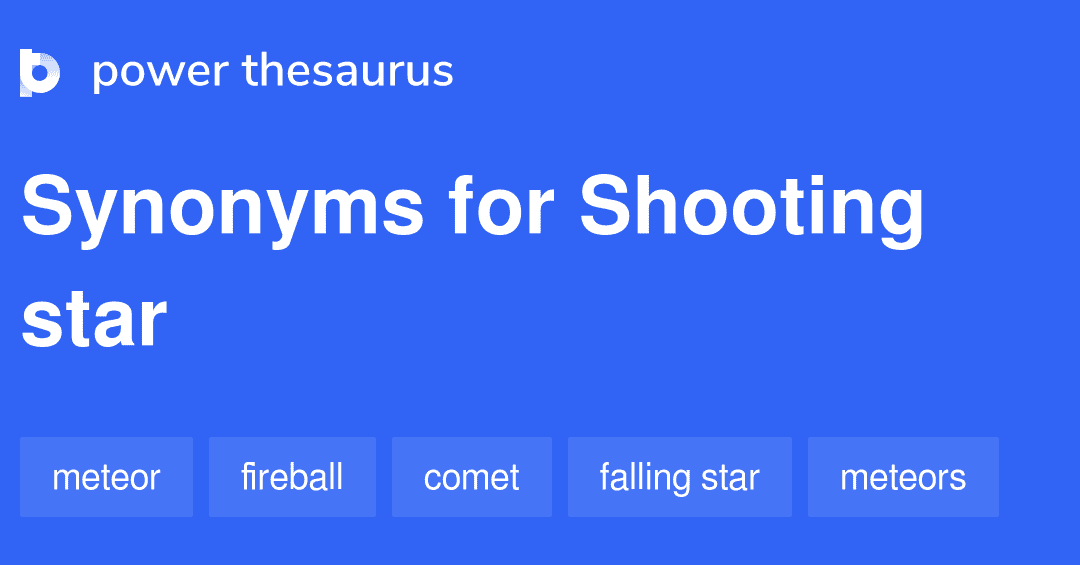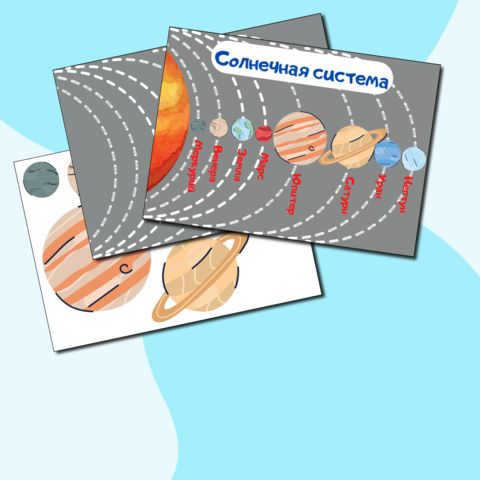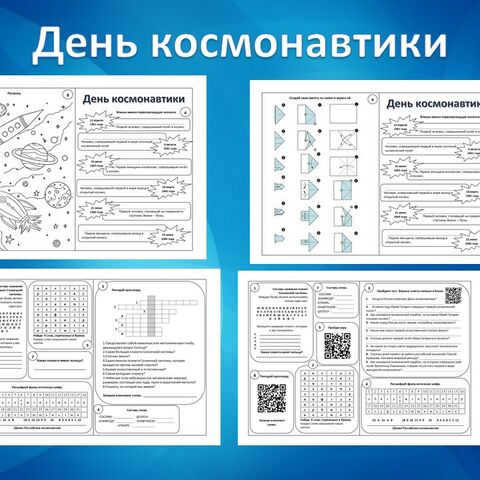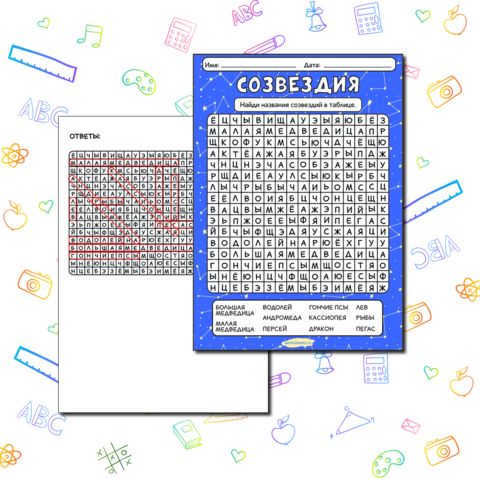

Currently, there are additional combined discounts (ranging from 2% to 25%) accessible to 58,742 educational establishments. To ascertain the applicable discount for all staff members at your educational institution, kindly sign in to your personal Infoworks account.


Advanced training program
Role of the class teacher in accordance with the Federal State Educational Standards in today’s school environment.
In addition to this offer, we can provide a special discount for your school (the discount amount depends on the number of your colleagues who have completed the Infoworks course).
Currently, we are offering additional cumulative discounts (ranging from 2% to 25%) to a total of 58,742 educational institutions. To find out the specific discount applicable to all staff members of your school, please sign in to your personal Infoworks account.


Continuing Education Program
Psychological Factors in Organizing Children’s Nutrition in Mainstream Education Settings
We can apply a discount to this offer for your educational institution (the amount of the discount depends on the number of colleagues from your institution who have completed Infoworks courses).
At present, 58,742 educational institutions are benefiting from additional discounts (ranging from 2% to 25%). To find out what discount is available for all staff members at your educational institution, please log in to your personal Infoworks account.


Unique aspects of teaching native Russian literature in schools considering the implementation of the updated FSES LLC
- Portfolios with certification
- Unlimited access for only 99 rubles
- Over 3,800 video lectures available to all

Online Courses for Educators
Evgeny Yamburg Pavel Severinets
Revolutionizing Education in the Future: School Year 2023
Exclusive Webinar for Teachers and School Administrators
Discover a Wealth of Resources for Every Lesson by Selecting Your Subject (Category), Grade Level, Textbook, and Topic:
Over 6 million materials available in our database
Additional resources
These courses might catch your attention:
- Professional development course “Shaping Personality During Adolescence”
- Professional development course “Student Internship Organization in Compliance with Pedagogical Training Guidelines”
- Advanced training course “Student Internship Organization in Compliance with Technical Training Guidelines”
- Advanced training course “Student Internship Organization in Compliance with Medical Training Guidelines”
- Advanced training course “Economics: Tools for Control”
- Advanced training course “Teaching Astronomy in Secondary School: Special Considerations”
- Professional retraining course “Tourism Management Organization”
- Advanced training course “Introduction to Tourism Management”
- Advanced training course “Assessing Business Value in Enterprise Finance”
- Professional retraining course “Teaching Astronomy in Educational Organizations: Theory and Methodology”
- Professional retraining course “Developing an Effective Strategy for Modern University Development”
- Professional retraining course “Innovative Information Environment Management”
- Professional development course “Financial Instruments and Strategies”
- Professional retraining course “Advertising and PR Service Organization and Management”
- Course “Information Support of Business Processes in the Organization” for retraining purposes
Share your thoughts
If you think that the content infringes on copyright or should be removed from the website for any other reason, please feel free to file a complaint. Remove content
- Duration of membership: 1 year and 9 months
- Number of subscribers: 0
- Total views: 912277
- Total resources: 4656
Online Courses
for Educators
Duration: 43 minutes
Duration: 53 minutes
Duration: 28 minutes
Gift Certificates
The responsibility for resolving any disputes regarding the materials and their content lies with the users who have posted the materials on the website. Nevertheless, the site administration is prepared to offer full assistance in resolving any matters concerning the operations and content of the website. If you come across any unauthorized use of materials on this website, please notify the site administration by using the feedback form.
All content published on this website is either created by the website’s authors or submitted by its users and is provided for informational purposes only. The copyrights for the materials belong to their respective authors. Copying any part or all of the website’s materials without written permission from the website administration is strictly prohibited! The views expressed by the administration may not necessarily align with those of the authors.
Each year during the summer, we have the pleasure of witnessing a mesmerizing meteor shower. This celestial event takes place on a predictable schedule in the month of August, rather than occurring randomly.
Overview
Don’t assume that a meteor shower is an unexpected event that occurs near our planet without any prior notice. In reality, every meteor shower passes close to Earth’s orbit on a regular schedule, at the same time each year.
The Perseid meteor shower is traditionally one of the most remarkable celestial events. Its peak activity usually occurs between July 17th and August 24th. The Perseids are known for being the most dynamic and spectacular meteor shower, which explains why many people eagerly anticipate its arrival every year.
Interestingly, this phenomenon often coincides with the occurrence of a supermoon. When these two phenomena align, the spectacle is truly unforgettable.
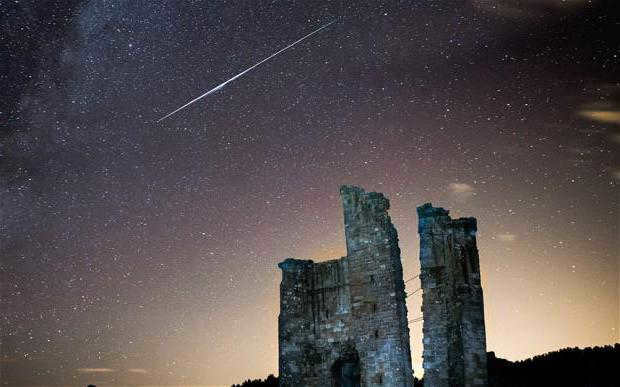
The comet Swift-Tuttle, discovered by two scientists in 1862, became the first comet to create a meteor shower. Interestingly, the discovery was made independently by both scientists on nearly the same day, leading to the decision to give the comet a dual name.
This comet has an orbital period of 135 years, and its last close approach to Earth occurred in 1992. The close proximity to our planet resulted in a high activity of the Perseids meteor shower. As a result, the following year, scientists observed an unprecedented number of meteors during the usual meteor shower, with the total number of celestial bodies exceeding five hundred per hour.
As the distance from the Sun increases, the annual count of Perseids diminishes. Since the late 1990s, this phenomenon no longer elicits the same level of excitement as it once did. Experts have determined that the next occurrence of the comet passing near Earth will not happen until 2126, consequently, only then will there be a surge in the quantity of shooting stars.
The first recorded mention of meteorites (Perseids) can be traced back to 36 B.C. in a Chinese chronicle. This meteor shower is frequently referred to in various Chinese, Japanese, and Korean chronicles up until the 19th century. Even in ancient times, people were curious about when the meteor shower would occur in August. However, due to the limited technology of that time, they were unable to obtain an accurate answer to this question. In contrast, we now have the ability to predict exactly when the most spectacular meteor shower will take place.
In Europe, the Perseids were historically known as the “Tears of St. Lawrence” because a festival honoring this saint coincided with the peak of the meteor shower.
When can we expect a celestial phenomenon known as starfall?
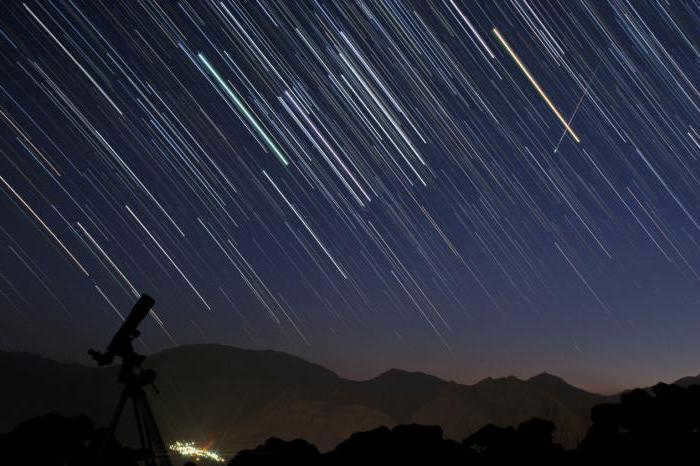
The stars typically reach their peak on the same dates every year. You can experience the wonder of stargazing on August 12th and 13th. During this time, there will be an impressive display of meteors, with a total count ranging from 100 to 110 per hour. It’s a truly unforgettable sight.
What makes stargazing in August even more appealing is that you don’t need any special astronomical equipment to enjoy it. This celestial show is accessible to all. Simply step outside and find a spot where the view of the sky is unobstructed by buildings or trees.
Usually, the primary peak of the Perseids meteor shower occurs between twelve and fourteen thirty. It’s important to note that the intensity of this event can vary greatly from year to year, as it directly depends on the density of the particle cloud within the comet’s path that intersects with Earth.
What is the ultimate location for observing?
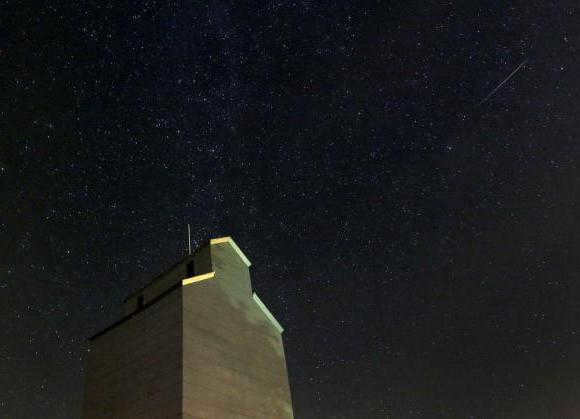
In addition to the concern over the timing of stargazing, it’s also important to consider the proper way to observe the stars. The best option is to find a location far from the lights of the city. It’s crucial to choose a night that isn’t too bright because then you may miss out on seeing faint meteors.
While stargazing, there’s no need to focus on a single point in the sky. It’s recommended to bring a comfortable reclining chair or a beach chair, so you can leisurely observe the entire sky without straining yourself.
What is the reason behind our fascination with stargazing?
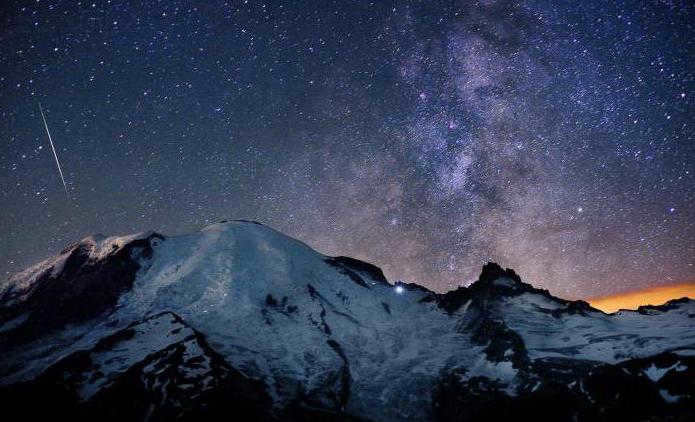
The inquiry “When can one engage in the observation of celestial bodies?” is deemed invalid since this celestial event can be witnessed throughout the entire night, commencing from the point of their emergence on the eastern horizon to the point where they encompass the entirety of the firmament.
Perseids are classified as meteorites of a white hue. Meteorites of other colors are not representative of this particular phenomenon and can be ascribed to a distinct astral pathway that is not as easily noticeable.
This occurrence is observable from any location on our planet.
When will the next occurrence of starfall happen?
Meteor showers happen annually because their paths intersect. Our planet crosses this path within a few weeks, allowing us to witness this magnificent event for almost an entire month, from July 17th to August 24th. The exact time of stargazing is not specified as it can be seen at various intervals.
1) To discover the meaning of stargazing;
2) To understand the cause of this phenomenon;
3) To describe the nature of the falling “stars”.
INTRODUCTION. PROJECT IDEA.
This subject is extremely relevant in today’s world. It is important for every individual to have some knowledge about the Universe, even if it is only the basic information found in children’s encyclopedias. However, not everyone is able to answer simple questions about space, such as the concept of stargazing and the reason behind “falling stars.”
1. FIRST, LET’S FAMILIARIZE OURSELVES WITH THE DEFINITION OF THIS TERM
So what exactly falls from the sky, captivating people with its beauty and enigma?
We refer to the phenomenon of many falling “stars” (sometimes up to 1000 per minute!) in the night sky as a “star rain” (also known as starfall or meteor stream). This occurrence is caused by Earth coming into contact with a cosmic swarm of solid particles known as meteoric bodies.
2. WHY DID I BRING UP THIS SUBJECT?
During my early years, I had a strong fascination with observing the vast, mysterious night sky. I would often find myself mesmerized by the sight of tiny, glistening dots zooming across it with incredible speed. Their rapid movement would sometimes catch me off guard, making it difficult to track their path. At times like these, my grandmother or mother would assure me, “No need to fret, it’s August, and shooting stars are quite common during this time of year.” But how could this be? Stars are massive celestial bodies, akin to entire planets. So why do they fall? And where do they go?
Although I have grown older, my fascination with the night sky remains. Over the years, I have gained a deeper understanding of the celestial bodies. I have absorbed knowledge from children’s encyclopedias, documentaries on the Discovery Channel, and various sources on the Internet. It is now clear to me that stars do not actually fall from the sky. Rather, they are immense spheres of hot gas that dwarf the size of our Earth. It is almost unfathomable to imagine the catastrophic consequences if one of these celestial giants were to suddenly explode and hurtle towards our planet.
3. THE OBJECTIVES OF MY RESEARCH WERE:
To explore the art of stargazing, to debunk the myth of falling stars, and to comprehend the significance of August as the peak season for stargazing. Additionally, I aimed to immerse myself in literature related to this subject in order to expand my knowledge.
What we commonly mistake for a shooting star is merely a meteorite that has traversed the Earth’s atmosphere after originating from outer space.
A meteor stream is created when comets break apart.
Over time, the material from a disintegrated comet is spread out evenly along the entire path of the original comet.
During the month of August, the Earth approaches one of these “streams,” resulting in a higher number of meteors.
Ancient civilizations observed the August meteor showers and referred to them as Zeus’ golden rain. The ancient Arabs believed that they were fiery arrows used by celestial angels in their battle against demons. Interplanetary dust particles enter the Earth’s atmosphere at high speeds and burn up, transforming into meteors – brief flashes that streak across the sky and disappear, leaving behind a faint glowing trail for a few seconds. This trail is colloquially known as a “shooting star.”
“Stellar precipitation” penetrates the atmosphere of our planet at velocities ranging from 11 to 73 kilometers per second, emitting a brilliant light at an altitude of 120 kilometers and extinguishing at an altitude of 70 kilometers.
Depending on their dimensions, celestial bodies possess various designations. The tiniest ones, no greater than a pea, are classified as meteors. They disintegrate upon entry into the atmosphere, leaving behind a luminous trail reminiscent of a shooting star. Larger masses that incinerate before reaching the Earth are known as bolides. The journey of a bolide may be accompanied by an audible noise, resembling a gentle rustling sound. The most substantial of these extraterrestrial visitors do not have sufficient time to disintegrate due to atmospheric friction and instead crash onto the Earth’s surface, acquiring the name meteorites.
The enigmatic expanse of the cosmos and all that it encompasses is a captivating enigma bestowed upon us by nature. It is a conundrum that has intrigued humanity since ancient times, as they gazed upon the celestial bodies with awe and wonder. Today, as modern-day students, we are tasked with unraveling this mystery. The Universe holds countless unknown and unexplored wonders, leaving us with an abundance of unanswered questions. The path of discovery lies ahead, waiting to be explored!
The opportunity to make a wish will be greatly enhanced during the night of August 12th to 13th. This is due to the abundance of “shooting stars” that will grace the night sky during this time. However, the meteor shower can be observed as early as August 9th and will continue for a full week until the 17th.
In order to elucidate the occurrence of “shooting stars,” we inquired with Professor KFU Yuri Nefediev, the director of the Astronomical Observatory named after V.P.Engelhardt:
The Perseid meteor stream, which is visible to the naked eye in August, is actually a result of the Earth passing through clouds of cosmic dust that originated from the breakup of comets or asteroids. These dust clouds are located in the Earth’s orbit and are formed due to the gravitational influence of the Sun, temperature differences, and the solar wind. The exact parent bodies of meteor streams, including the Perseids, are still being studied by astronomers at Kazan University. Over the past three years, we have published four scientific articles on this topic in the esteemed journal “Advances in Space Research.”
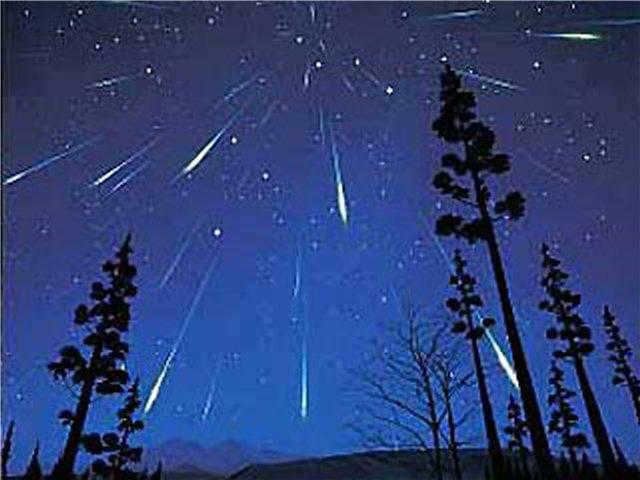
It should be noted that on a daily basis, anywhere between 60 to 400 tons of space dust falls into the Earth’s atmosphere (according to various estimates). The majority of this dust settles on the planet’s surface. Yuri Anatolievich explains that meteors are small particles of dust, weighing approximately 0.3 grams and measuring up to 1 millimeter in size. These particles enter the Earth’s atmosphere at a high velocity of about 30 kilometers per second (which is the same speed at which the Earth moves along its orbit and enters the dust cloud). As these meteor particles travel through the air, they experience friction which causes them to heat up and eventually burn up in the atmosphere. This occurs at an altitude of roughly 80 kilometers and during this process, the atmospheric particles become ionized. These ionized particles are responsible for creating the luminous trails that we commonly refer to as “shooting stars.”
“According to the astronomer, the celestial sphere contains luminous traces that persist in the opposite direction. All meteors’ paths will intersect at a specific point known as the radiant. Interestingly, in actual space, the trajectories of meteor particles within a particular meteor swarm are actually parallel to each other. The name of the meteor stream depends on the constellation where the radiant is located. In the case mentioned, the radiant is situated in the Perseus constellation.”
Why is stargazing such a rare occurrence? The answer is quite simple: the peak intensity of this phenomenon typically occurs during the nighttime hours when the majority of people are fast asleep. Experts recommend venturing away from the bright lights of the city, as they can hinder one’s ability to witness the awe-inspiring meteor shower. The intensity of these showers cannot be accurately predicted beforehand. However, those who venture out to the countryside on the weekends are more likely to be rewarded with a breathtaking spectacle. The best time to marvel at this beautiful sight is between one o’clock in the morning and the break of dawn, which begins at four hours and eleven minutes.
Together with their Turkish and Japanese colleagues, astronomers from KFU made a groundbreaking discovery of an exoplanet
Physicists are currently studying the amplification of an optical signal within cubic nonlinear nanostructures
Kazan Federal University’s ionosonde recently detected an earthquake in Chile
Kazan Federal University (KFU) now offers a GIS portal dedicated to the river basins of European Russia. This new resource, available on the KFU website, provides valuable information and data on the river systems in this region.
Astronomer from KFU has made significant contributions to the research on blazars, a type of active galactic nucleus. This research has helped to further our understanding of these celestial objects.
A new map has been developed to track ionospheric disturbances, which will aid in improving radio network systems. This map will provide valuable insights into the behavior of the Earth’s ionosphere.
Interstellar fullerenes, a type of molecule found in space, may hold the key to solving earthly problems. Scientists are exploring the potential applications of these unique molecules.
Russian and German scientists have collaborated to develop a new climate model. This model will help us better understand and predict climate patterns and their impacts.
Two universities in Kazan have presented a prototype of the most advanced quantum memory. This breakthrough technology has the potential to revolutionize computing and data storage.
Researchers at Kazan University have conducted an analysis of the causality principle for the conductivity of graphene. This study provides valuable insights into the behavior of this material.
Read more
Russian and Georgian universities have joined forces to study the properties of solitons, a type of wave phenomenon. This collaboration will further our understanding of these unique waves.
A large laser crystal has been developed for use as an active medium in lidar systems. This crystal will enhance the performance of lidar technology, which is used in various applications.
Kazan University has constructed fault-finding equipment for cars and machinery. This equipment will help diagnose and troubleshoot issues, improving the efficiency of these systems.
R. David Britt awarded the Zavoisky Award in 2018
https://www.eurekalert.org/pub_releases/2018-09/kfu-rd092518.php
Contactless water quality control using spectroscopy
https://www.eurekalert.org/pub_releases/2018-09/kfu-cwq092618.php
A student-designed anemometer to be manufactured by a Kazan-based company
Kazan University physicists make history by observing the quantum state of magnons at room temperature
Astronomer Alexei Starobinsky awarded the Vasily Struve Medal during the 4th Petrov Readings
Cryptographic algorithms for quantum networks that slice optical beams
Ionosphere plasma experiments examined in a new publication by Kazan University
Graphene oxide aiding in the creation of nanocomposite materials with unique properties
As summer draws to a close, there is a captivating phenomenon that captivates the eyes – a plentiful display of stargazing, where the night sky is adorned with radiant trails. These trails can take the form of solitary “paths” or a magnificent shower of fiery lights. During particularly bountiful years, individuals make it a point to venture out at night to partake in the festivities and appreciate this awe-inspiring spectacle. Couples exchange kisses under the illuminated sky, romantics find solace in the sight of the vibrant heavens, and poets are inspired to pen verses. And what is another term used to describe these shooting stars?
Beliefs and Folklore
One of the most popular and widely believed superstitions is the act of making a wish upon seeing a falling star. The tradition holds that if you manage to make your wish before the star disappears, it will come true. Conversely, if you miss the opportunity, it is believed that either you do not truly desire the wish or it is not meant to be.
A lesser-known myth, more prevalent among religious individuals, suggests that a shooting star represents an angel carrying the soul of a newborn baby.
In ancient Greek culture, shooting stars were believed to be divine spears or arrows aimed at evil forces. Slavic cultures associated shooting stars with death, while the Scandinavians saw them as the souls of forgiven humans and gods. Muslims viewed shooting stars as powerful and malevolent enemies.
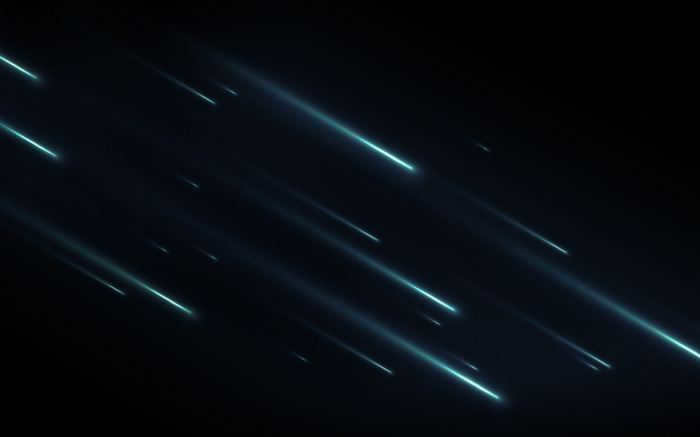
Scientific explanation
Meanwhile, it is widely known, even among high school students, that a star cannot actually fall. In reality, a star is an enormous sphere of gas with unimaginable temperatures. If a star were to collapse onto Earth, it would likely obliterate everything in its path. So what is the scientific term for what people commonly refer to as shooting stars?
Essentially, the vibrant streak seen in the sky is caused by a rock entering the outermost layers of Earth’s atmosphere. As the rock interacts with the air, it becomes heated and begins to emit light. This is the true explanation behind shooting stars. Scientists refer to these phenomena as “meteors” if they are small enough to completely burn up within a distance of approximately 80 to 100 kilometers, still within the atmosphere. Some meteors are so tiny that they cannot be observed without the aid of binoculars or even a telescope.
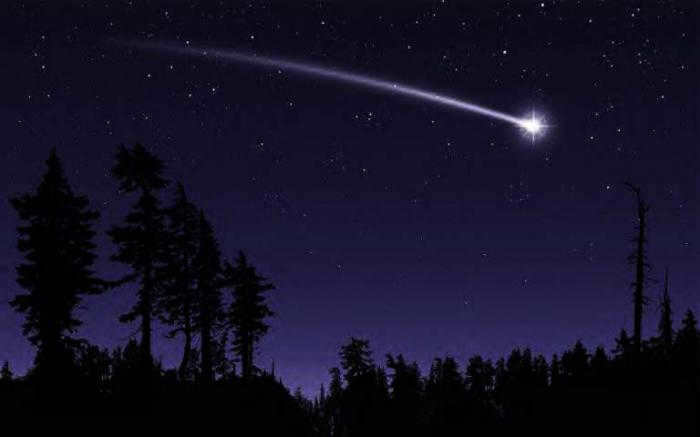
What is the alternative name for shooting stars that have “fragments” that reach the ground? These shooting stars are of considerable size and tend to enter the atmosphere at a relatively slow pace, allowing the air to decelerate their descent. They resemble meteorites, which streak across the sky with a thunderous roar and leave behind a crater upon impact. It is worth noting that stones of this magnitude, and even those that enter at the correct angle and speed, are quite uncommon, so the fall of each one is etched in human memory for a long time (such as the Tunguska event or the one that fell in Africa).
Origins of shooting stars
Individual meteorites can be observed throughout the year. This phenomenon occurs when certain random objects are trapped by the magnetic field of our planet (as well as any other planet). On the other hand, there are also instances of large-scale meteorite showers, commonly known as falling stars, as we have previously discussed.
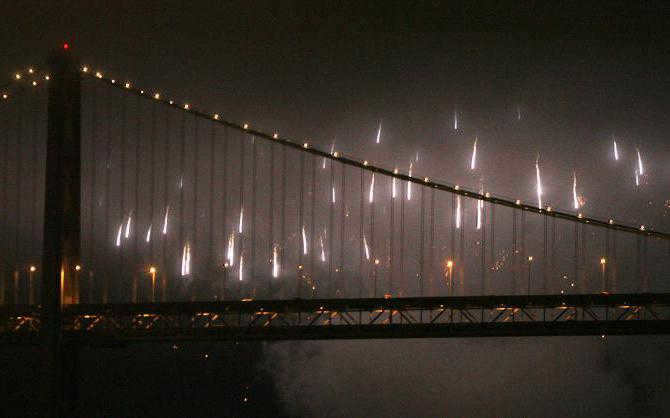
The scientific community has determined with precision that shooting stars are exclusively produced by comets. This celestial occurrence is comprised of a solid object (typically ice, although there are variations with rocky composition; even ice-based comets contain solid particles). When the comet nears a star with an extreme temperature, the ice sublimates, carrying the solid elements of the nucleus along with it. The tail is formed by the microscopic dust particles carried away by the “solar wind”. Heavier pebbles, too large to be carried by the wind, create a donut-shaped structure known as a “torus”. If this torus enters the gravitational field of a planet, it results in a meteor shower.
Stargazing: A Fascinating Phenomenon
There have been two remarkable meteor streams that have been documented. The first one is known as the Leonids, while the other is called the Perseids, named after the direction from which they appear to originate. The Leonids meteor shower occurs every few years and offers a mesmerizing display of shooting stars. On the other hand, the Perseids meteor shower graces the sky every summer. The frequency of these showers depends on the age of the celestial bodies’ stream that the Earth encounters. If the stream is relatively “young,” there will be a plentiful starfall. However, if the stream has had multiple encounters with our planet (and possibly others along its path), its “stone warriors” will have been significantly reduced.
Why Choose August?
What makes August’s “meteor showers” so fascinating is that they occur every year. Astronomers have reached a consensus on why these shooting stars appear in August and not any other month. They attribute it to the tail of the comet known as Swift-Tuttle, which the Earth passes through during this time. What’s great about this particular meteor shower is that it is accessible to everyone, without the need for any special equipment, and it doesn’t matter where you are on the planet. It’s a spectacle that can be enjoyed by anyone, not just astronomers.
The conclusion of every summer is denoted by an impressive and unparalleled occurrence: stargazing. This event captivates all observers and there is scarcely an individual who will remain unaffected by this spectacle.
What is the folklore surrounding this event?
Since antiquity, the descent of a star has been associated with a plethora of omens and superstitions. Even a child is aware that when a star descends, they should make their utmost cherished wish, and it will assuredly be granted. According to an ancient myth, each person possesses their own personal star. It illuminates the sky upon their birth, and upon their demise, it hastens to plummet to the earth and extinguish. At this precise moment, it fulfills any desire expressed by the individual. If an individual fails to make a wish in time, it signifies that they do not harbor an intense desire, or their wish will simply not materialize.
According to an alternative myth, a shooting star is believed to be a celestial being descending to Earth in order to bestow a soul upon a recently born individual. Stars, symbolizing disembodied souls, would descend to the earth and assume corporeal form upon arrival.
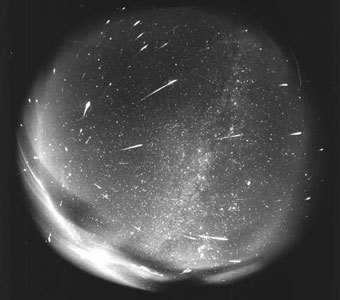
During ancient times, it was widely believed that falling stars were actually arrows sent by the Gods, who were engaged in a battle against evil forces. Each nation had its own unique superstitions associated with shooting stars. For example, Muslims considered it as a symbol of an evil enemy, Slavs associated it with impending death, while Scandinavian countries believed it to be a sign of a departed soul seeking forgiveness. Additionally, there is a common belief that when an individual witnesses a falling star, they will become ill and never recover.
Nevertheless, scientific knowledge has established for a considerable period that stars do not descend haphazardly. A star is an enormous sphere composed of scorching gas. Given that the dimensions of stars dwarf those of the Earth, it proves challenging to conceive the outcome if numerous such spheres were to spontaneously detonate and soar towards our planet. However, an undeniable occurrence is observed plummeting against the somber expanse above, and a multitude of individuals have already borne witness to this awe-inspiring event.
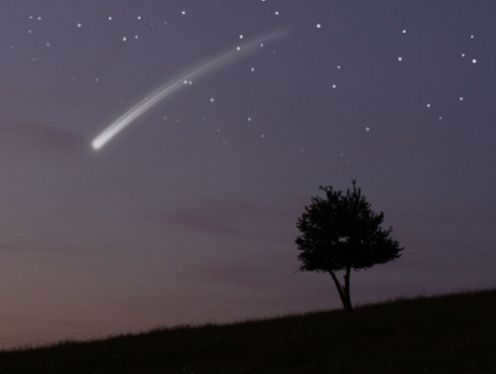
Indeed, the object commonly referred to as a shooting star is actually a rock that has traversed the Earth’s atmosphere. As it travels, it becomes so hot that it starts to emit light and creates a luminous streak. Eventually, the rock incinerates completely, leaving no trace behind. These rocks are known as meteors. Every day, thousands of these meteors streak across the sky. Some of the rocks that are able to survive the journey and make it to the Earth’s surface are called meteorites. The largest meteorite ever discovered fell in Africa, weighing a staggering 60 tons.
Why is it that the largest meteor shower can be observed specifically in August? The reason is that during this time, our planet crosses through an area filled with dust particles, which are released by a comet. When these tiny particles enter the Earth’s atmosphere, they burn up, creating the spectacle of a meteor shower. This beautiful phenomenon can be observed from any location on the planet, and special equipment is not necessary. The next time the comet will come close to Earth will only be in 2126. Until then, we will have the opportunity to observe other meteor showers, but unfortunately, they will not be as bright and impressive.
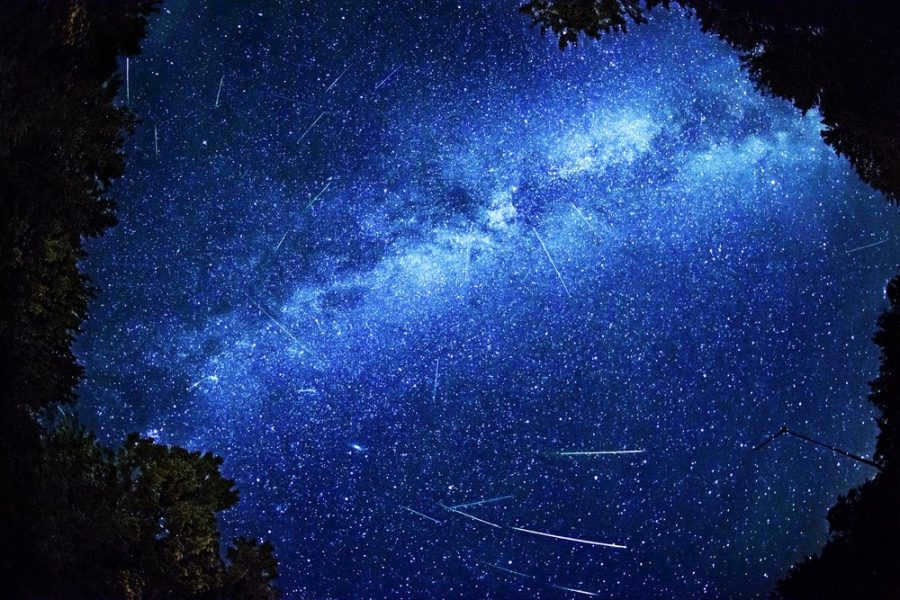
- Astronomical phenomena
Astronomical phenomena, also known as celestial events, are natural occurrences that take place in outer space. One such phenomenon is a star shower, which is also referred to as a meteor stream or starfall. A star shower is a meteor shower that is characterized by a high intensity, with a zenith hourly number of over a thousand meteors per hour. These meteor showers occur when the Earth intersects with the orbit of a meteor swarm at a specific time of year. Additionally, the radiant streams of the meteor shower can be observed at a specific point in the sky.
The terms meteor shower and meteor stream should not be confused. A meteor stream consists of meteors that burn up in the atmosphere and do not reach the ground, while meteor showers are composed of meteorites that fall to the ground. In the past, these two phenomena were not differentiated and were both referred to as rock or “fire rain” until they were extensively studied.
In memoirs and fictional prose, the metaphorical phrase “star rain” is often used as a captivating metaphor, describing a volcanic eruption, a massive fire, or even a rain of gold. It can also refer to various types of fireworks, sparks, and other luminous materials.
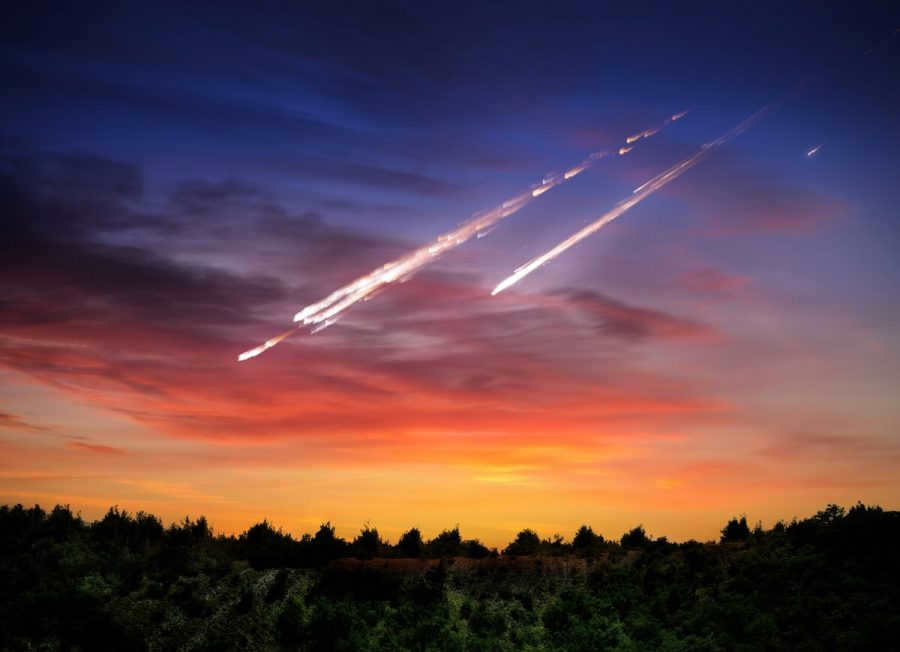
Meteorite – A celestial object from outside Earth that has reached the Earth’s surface without completely burning up in the atmosphere. When such an object enters the Earth’s atmosphere, it decelerates due to air resistance and becomes extremely hot, reaching temperatures of several thousand degrees.
Many times, meteorites explode while still in the atmosphere, producing small fragments. However, if the celestial body is particularly large, it can create a substantial crater upon impact with the Earth’s surface. Some ancient craters on Earth have diameters of approximately 100 kilometers, posing a significant threat to humanity.
Therefore, a meteorite or meteoric body is a space object that orbits and eventually enters the Earth’s atmosphere, ultimately falling to the Earth’s surface.
Meanwhile, each meteorite possesses a unique composition – for instance, there exist objects that have descended onto Earth from Mars or the Moon. The overwhelming majority of meteorites discovered on our planet are categorized as stone meteorites, primarily consisting of silicates.
Over 90% of stony meteorites contain chondrules, which are rounded silicate grains measuring a few millimeters in diameter. These types of meteorites are referred to as chondrites. Additionally, there are iron meteorites, which are comprised of an alloy of iron and nickel. Lastly, there is an intermediate class of meteorites that possess roughly equal proportions of metal alloy and silicates.
Every single day, approximately 5-6 tons of small meteorites descend onto Earth.
What constitutes a meteor?
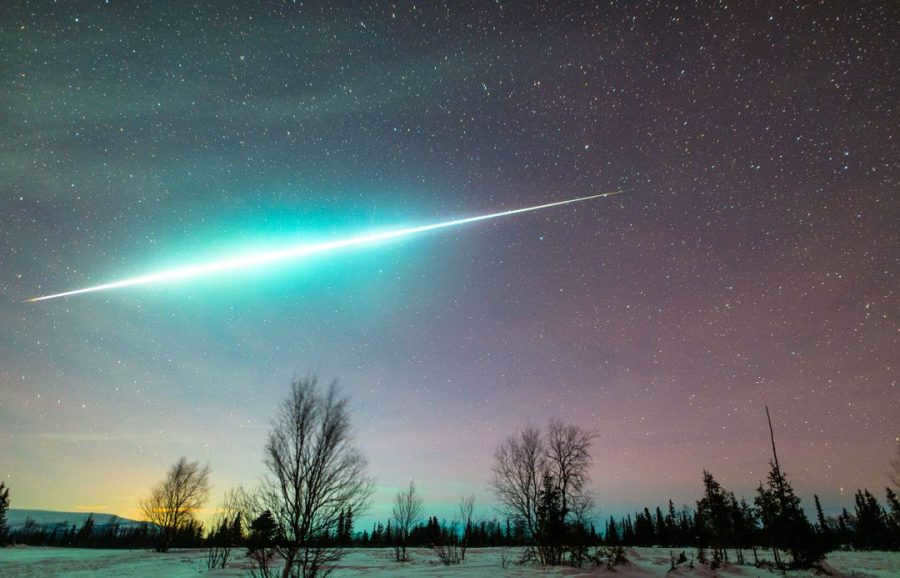
A falling star – is the exact occurrence of a “shooting star”, a stunning trail in the nocturnal heavens. A celestial entity has the potential to descend to the Earth’s surface and subsequently transform into a meteorite, disintegrate entirely within the atmosphere, or even elude the grasp of gravity and soar away – regardless of the outcome, astronomers classify the observed spectacle as a meteor.
Meteors are frequently classified into meteor showers – permanent collections of meteors that routinely manifest at specific moments in a designated region of the sky. These showers are formed by comets that fracture and disintegrate as they traverse through the inner regions of the solar system.
What is the meteor shower’s radiant?
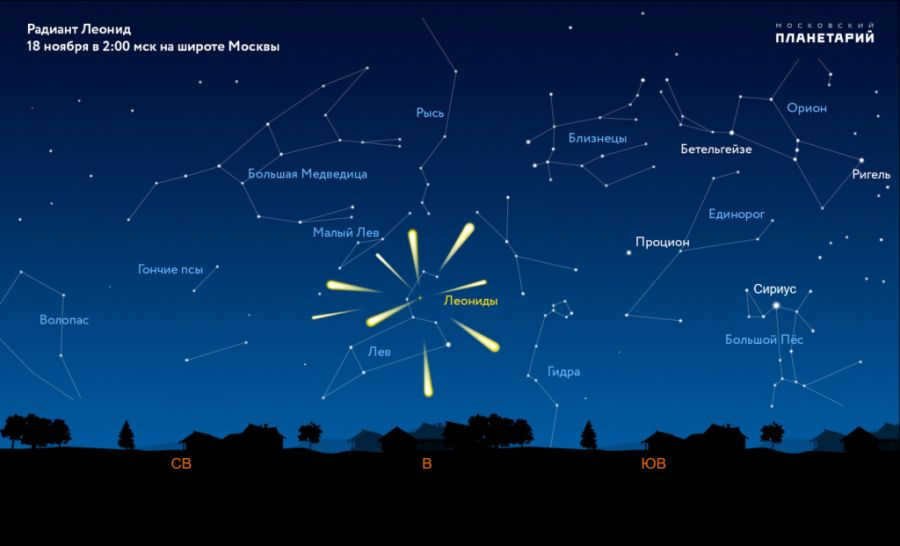
When cosmic objects move towards the Earth’s surface in nearly parallel paths, it creates the illusion for an observer on Earth that there is a shower of stars originating from a specific point in the sky. This point is known as the radiant.
Typically, meteor showers are named after a constellation or a specific star within the area of origin. For instance, the radiant for the Leonid meteor shower is located in the Leo constellation, while the Draconid meteor shower’s radiant is in Draco.
Formation of Meteor Streams
Meteor streams are formed through the disintegration of comets as they come closer to the Sun, leaving behind solid particles known as cosmic dust. When the Earth’s orbit intersects with the orbit of a comet, observers on the planet’s surface witness the phenomenon of “shooting stars” caused by the dust particles orbiting the comet’s tail.
In order to comprehend the occurrence of meteor showers, it is important to understand the unique characteristics of comets’ material composition and orbits. A comet follows an elongated orbit, experiencing intense solar radiation at its closest point to the Sun, known as perihelion, and minimal radiation at its farthest point, known as aphelion. As the comet, comprised of ice, rock, and dust, approaches the Sun, its structure begins to disintegrate, resulting in the ejection of dust particles and rock fragments, which form a trail in orbit.
When our planet Earth collides with this plume during its orbit, we can observe meteor showers on its surface. These showers vary in intensity, as the destruction of cometary material is not constant during different stages of the comet’s approach to the Sun.
The Quadrantids
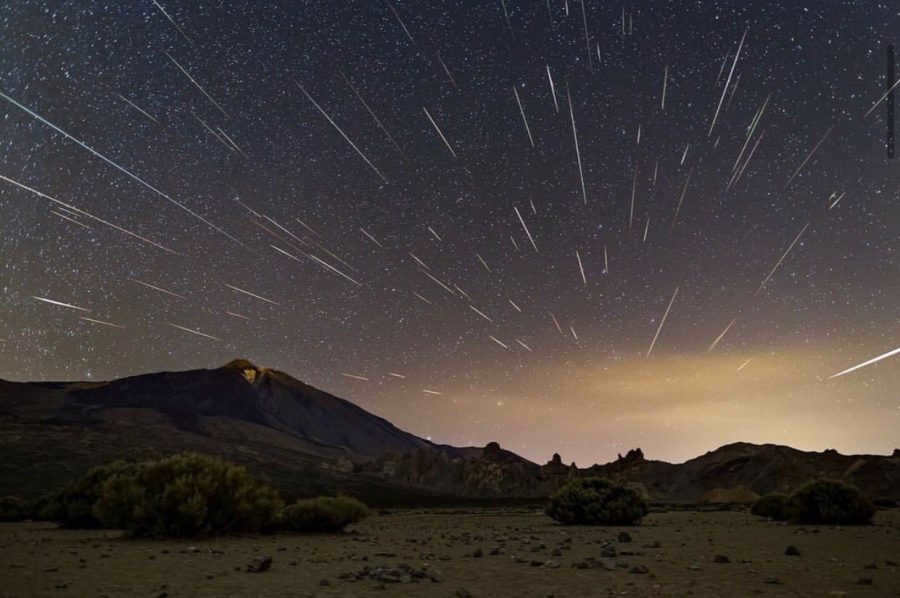
This meteor shower is both powerful and brief. You can witness the Quadrantids right after celebrating the New Year until January 12. The star shower will reach its peak on the night of January 3 to January 4. During this time, you can expect to see anywhere from 60 to 200 shooting stars.
Due to the slow speed of the meteor stream, the brightness of the meteor shower will not be very intense. The Quadrantids originate from the Volopas constellation. While observing them, it is recommended to make wishes related to work, finance, and the business sphere of life.
Lyrid meteor shower
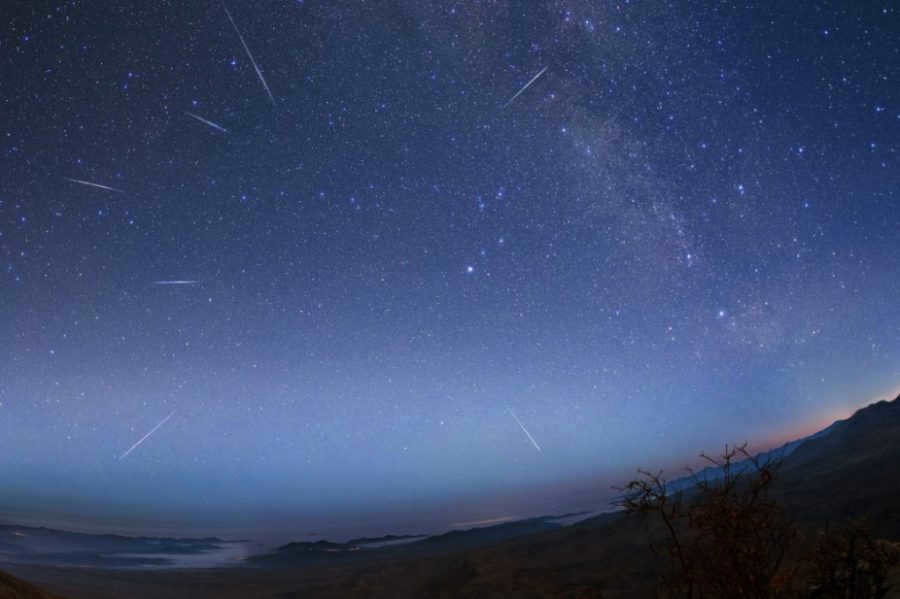
The Lyrids meteor shower is set to commence on April 16th and will last until the 25th. The peak activity of this celestial event is expected on the night of April 22nd to the 23rd. During this time, stargazers can anticipate witnessing approximately 20 shooting stars per hour.
The radiant point of the Lyrids meteor shower is situated within the constellation of Lyra. This period of meteor activity is said to be particularly auspicious for individuals engaged in creative pursuits such as musicians, actors, designers, and other artistic professionals. As the shooting stars streak across the sky, these individuals are encouraged to make wishes pertaining to inspiration and new ideas.
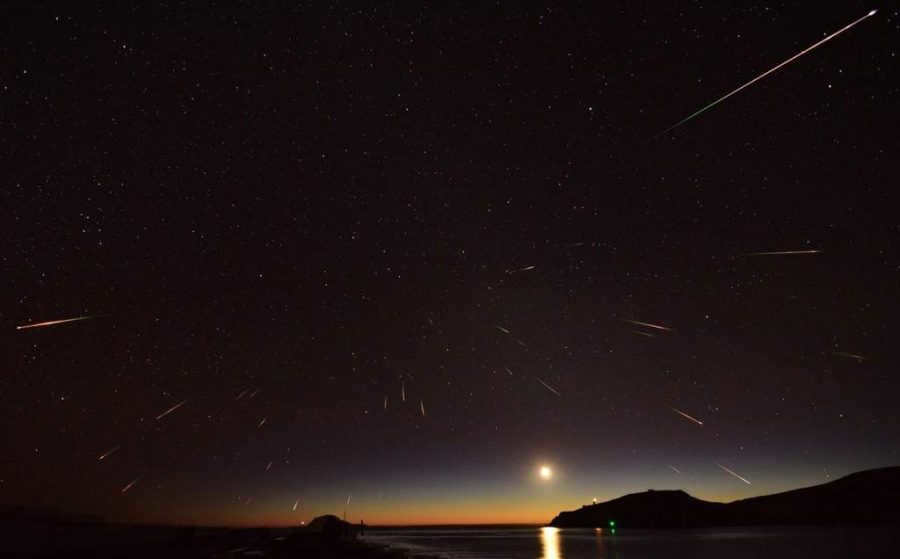
This meteor shower is composed of small pieces of Halley’s Comet. It will last for a significant period of time – from April 19th to May 28th. The rate of meteors will be approximately 50-60 per hour.
The meteor shower will be exceptionally brilliant and easily observable. This is due to the rapid velocity at which the meteor fragments enter the Earth’s atmosphere.
The radiant point of the shower is linked to the constellation Aquarius. The peak nights of the meteor shower are May 6th and 7th. These dates will bring good luck to those born under the sign of Aquarius. Remember to make a wish regarding material prosperity, luxury purchases, and career success.
Arietids
Arietids are the remnants of the Machholtz comet. They are set to pass through Earth’s atmosphere from May 14 to June 24. The stream’s velocity will be moderate, resulting in a starfall that is not particularly bright but quite intense. On the night of June 7-8, approximately 50 meteors per hour are expected to be visible.
The Arietids meteor shower is connected to the Aries constellation. During the shower’s occurrence, it is customary to make wishes for positive changes in one’s life and for the realization of immediate plans.
The Perseids Meteor Shower
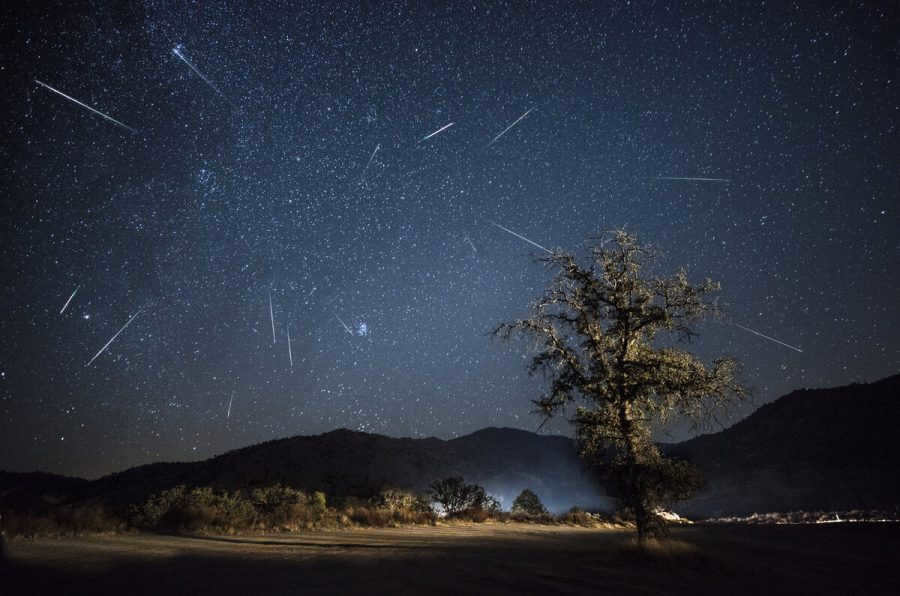
This incredible phenomenon is known as one of the most dazzling and breathtaking meteor showers. The Perseids can be observed from July 17 to August 24, with their peak activity occurring from August 12 to 13. During this time, an astounding 160 meteors can be seen streaking across the night sky every hour.
The shooting stars originate from the Perseus constellation and bring with them the promise of love and romance. It is believed that wishes and dreams connected to matters of the heart have a higher chance of coming true during this celestial event. Take the opportunity to make a wish for a joyful reunion with a cherished partner or a delightful romantic encounter.
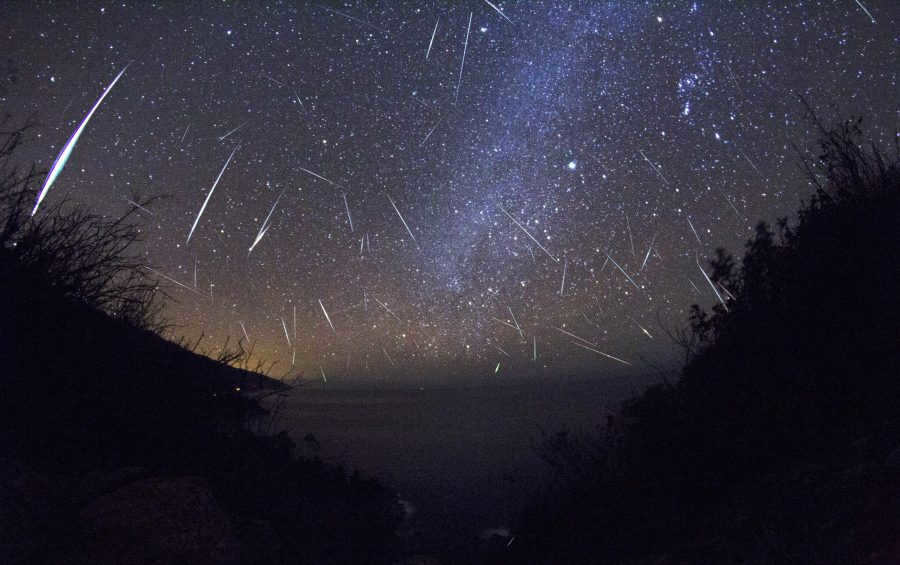
Orionids are the remnants of Halley’s Comet, with their peak activity occurring from early October to November 5-7. The highest number of meteors will be visible on October 21, with approximately 15 to 20 meteors falling per hour. These meteors will be exceptionally bright due to their high speed.
The radiant point of the Orionids is situated in the vicinity of the Orion constellation. This meteor shower presents an opportune time to make wishes related to various aspects of life.
The Geminids Meteor Shower
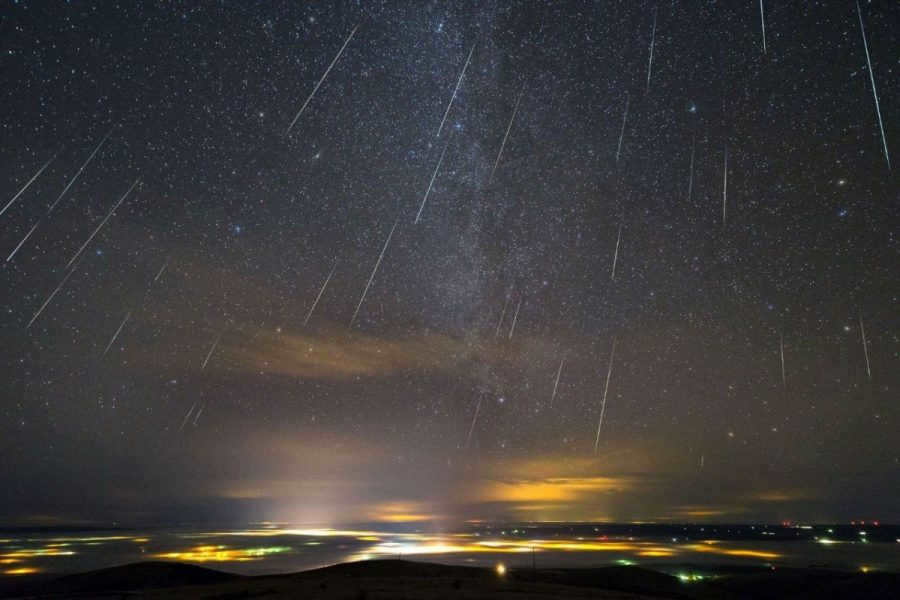
One of the most potent meteor showers is known as the Geminids. It boasts an impressive display of up to 120 shooting stars per hour. The Geminids are visible throughout December, with their peak occurring on the night of December 14-15.
This meteor shower is particularly significant for those born under the sign of Gemini, as the radiant point of the Geminids is located within this constellation. It is believed that wishes made during this celestial event are especially powerful in areas such as creativity, romantic relationships, and personal fulfillment.
Ursids
The Ursids are a meteor shower that occurs annually in December. The shower is named after the constellation Ursa Minor, from which the meteors appear to radiate. The Ursids are a relatively minor meteor shower, typically producing about 5-10 meteors per hour at its peak. However, the shower has been known to produce outbursts of up to 100 meteors per hour. The Ursids are best viewed in the northern hemisphere, where the constellation Ursa Minor is visible. The shower is usually active from December 17 to 26, with peak activity occurring around December 22.
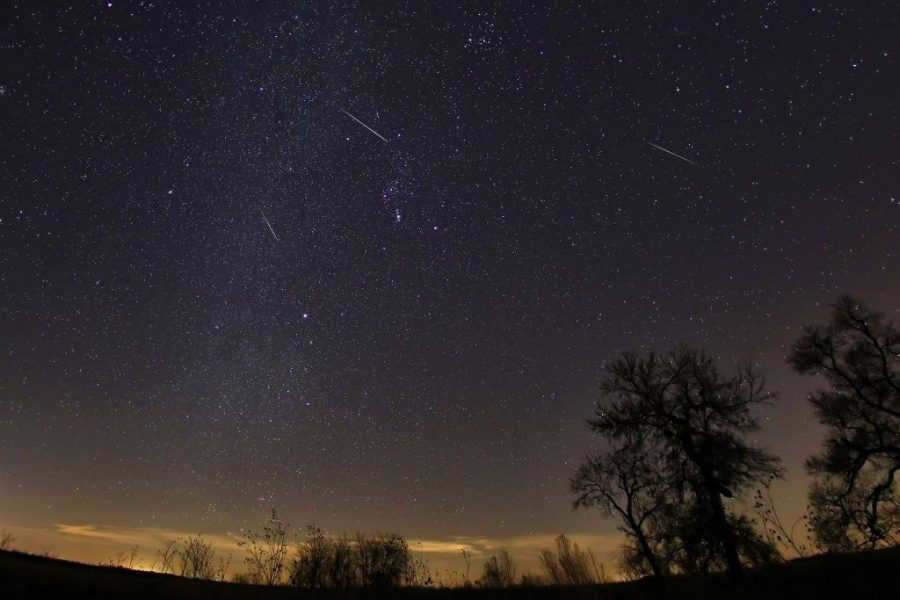
The Ursids meteor shower is set to occur in late 2021, with its peak expected on December 21-22. Despite being relatively faint, there is a popular belief that witnessing the descent of an Ursid meteor can bestow good luck and serve as a guiding star. Don’t pass up the opportunity to witness this celestial event, as it may inspire you with newfound creativity.
History of Observation
The advancement of modern astronomical observatories has made it possible to meticulously observe cosmic phenomena in all their grandeur. However, there are still phenomena that can be observed with the naked eye due to their distinct visual appearance. Meteor showers have been observed since ancient times, resulting in an extensive collection of astronomical data. By visually witnessing these streams in the sky, scientists from previous centuries were able to establish a connection between meteors and comets, as well as determine the orbits of most comet trails.
The credit for discovering the connection between comets and meteors goes to Italian astronomer Giovanni Schiaparelli. In August 1866, while observing the Perseids, Schiaparelli noticed that the orbit of the meteor particles closely resembled the orbit of the recently discovered Swift-Tuttle comet.
The relationship between comets and meteors was verified by Newton and the scientist Adams from England. Newton examined accounts of a powerful “star shower” originating from the constellation Leo, which was observed in 1799 and 1833. He proposed that this phenomenon occurred every 33 years and predicted a recurrence in 1866. This prediction came to fruition in November 1866. Adams calculated the orbit of Leonidas and discovered that it resembled that of the Tempel-Tuttle comet.
Witnessing a magnificent celestial event is a simple undertaking, accessible to anyone who desires to do so. Telescopes are not necessary to observe vast meteor showers. The key requirements are a night without moonlight and absence of other nearby light sources. The ideal time for observation is during the summer, when the sky is filled with both faint and intense meteor showers, including the captivating annual Perseids.
It is unlikely that anyone would turn down the chance to witness the most stunning astronomical spectacle – a meteor shower. Such a golden opportunity will arise multiple times in the near future. Starting from the end of July and continuing until the September equinox, a number of meteor streams will grace the night sky, including the renowned and plentiful Perseids and the radiant Delta Aquarids. To find out the specific dates and times when you can marvel at the shooting stars and make your wishes, check out the article on REN TV.
A meteor stream, also known as starfall, star rain, or meteor shower, refers to the collective name for meteors when they enter the Earth’s atmosphere. Each year, as the Earth revolves around the Sun, it encounters clusters of cosmic dust, which originate from the disintegration of comets or asteroids and are found within the Earth’s orbit. It is theorized that the disintegration of these celestial bodies is caused by the gravitational pull of the Sun, temperature variations, and the solar wind.
Every single day, an estimated 60 to 400 tons of space dust descends upon the Earth’s atmosphere, with the majority of it settling down on the planet’s surface. These dust particles, known as meteors, weigh around 0.3 grams and range in size from less than a millimeter to one millimeter. These meteors “fly” into our planet’s atmosphere at an incredibly high speed of approximately 30 kilometers per second, which is the same speed at which the Earth orbits and enters the dust cloud. As these meteor particles travel through the air, they experience friction, causing them to heat up and ultimately burn up in the atmosphere at an altitude of roughly 80 kilometers. In the process, these particles ionize the atmospheric particles, resulting in the creation of luminous trails that we commonly refer to as shooting stars.
If these glowing paths persist in their opposite direction on the celestial sphere, the paths of all meteors will converge at a single point known as the radiant. However, in space, the paths of the meteor particles within the meteor swarm remain parallel to each other. The name of the meteor shower is derived from the constellation in which this radiant is located.
Two kinds of observing the stars
There is a distinction between the similar terms “meteor shower” and “meteorite shower”. A meteor shower refers to meteors that burn up in the Earth’s atmosphere and do not reach its surface. On the other hand, a meteorite shower refers to meteorites that partially burn and fall to Earth.
Originally, no distinctions in the nature of these two phenomena were observed, and they were both referred to as a “rain of fire”. However, after conducting more detailed studies, scientists were able to establish the difference between them.

As of now, astronomers have validated the presence of 64 meteor streams, with another 300 awaiting official confirmation. However, only around ten of them are considered to be the brightest and most intense.
July’s Meteor Stream Peaks
Southern Delta Aquariids Meteor Shower
Rate of occurrence: 25 meteors per hour
Active period: July 12 – August 23
The Southern Delta Aquariids meteor shower is among the most plentiful meteor streams in the Southern Hemisphere. Observers have witnessed heightened activity in 1977 and 2003, with rates reaching approximately 40 meteors per hour. This year, the peak activity of the Southern Delta Aquariids is anticipated to occur on July 30. The meteor stream consists of both bright and faint meteors, making it suitable for both observation and photography.
Alpha Capricornidae Starfall
Rate: 5 meteors per hour
Active Period: July 3 – August 15
Alpha Capricornidae is not the most active meteor stream. The meteors it produces are slow-moving and bright, but they are not very abundant. The highest number of meteors per hour was observed in 1995, reaching about ten. In 2022, the peak of the Alpha Capricornids will occur on July 30. The best viewing opportunities will be in the Southern Hemisphere, where the radiant will rise high in the sky around midnight local time. It will also be visible in the Northern Hemisphere, but closer to the horizon.
August’s Meteor Shower Peaks
The Perseids
Rate: up to 110 meteors per hour.
Active: from July 17 to August 24
Observable: in the Northern Hemisphere
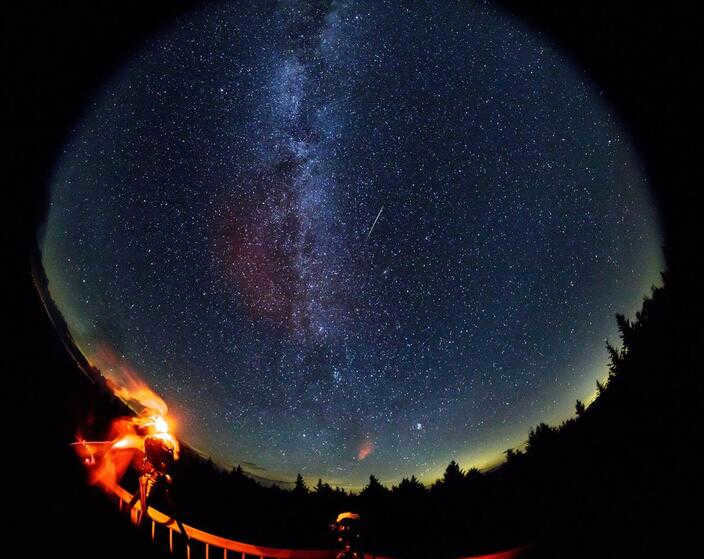
The Perseids, known as falling stars, have gained popularity as one of the most spectacular meteor showers. These shooting stars are predominantly visible in the Northern Hemisphere, where the radiant point is consistently above the horizon. The year 2022 is set to offer the optimal conditions for observing the Perseids, as the Moon will be in its new moon phase, minimizing any interference with the meteor shower. The Perseids will reach their peak activity on August 12th at 23:00, providing the best opportunity to witness a multitude of meteors lighting up the night sky.
Observing the Perseids is a unique experience that can only be enjoyed once a year, when the Earth crosses paths with the Swift-Tuttle comet’s orbit.
Kappa Cygnides meteor shower
Rate: 3 meteors per hour.
Duration: August 3-25.
Visibility: in the Northern Hemisphere
The Kappa Cygnids displayed heightened activity in the years 2007 and 2014. However, only up to three meteors per hour are expected to be observable in 2022. The peak of the meteor shower is anticipated on August 18. In the Northern Hemisphere, the radiant will remain in the sky throughout the night. In the Southern Hemisphere, it will either be positioned low above or below the horizon: the further south you are, the less likely it is that you will be able to witness the Kappa Cygnids.
Proper Techniques for Stargazing
Contrary to popular belief, optical aids are not necessary for stargazing. In fact, it is best to observe the stars with the naked eye. However, if you wish to view the Andromeda Galaxy and Jupiter’s satellites, binoculars can be helpful. Additionally, it is possible to photograph meteors by using a slow shutter speed on your camera, capturing the particles as tracks against the starry sky.
Stargazing within city limits is nearly impossible due to light pollution. Even on the outskirts, only the brightest meteors will be visible. To optimize your stargazing experience, it is recommended to travel 30-40 kilometers outside the city and find an open area. The further away from populated areas you are, the less light “pollution” there will be, allowing you to see more shooting stars.
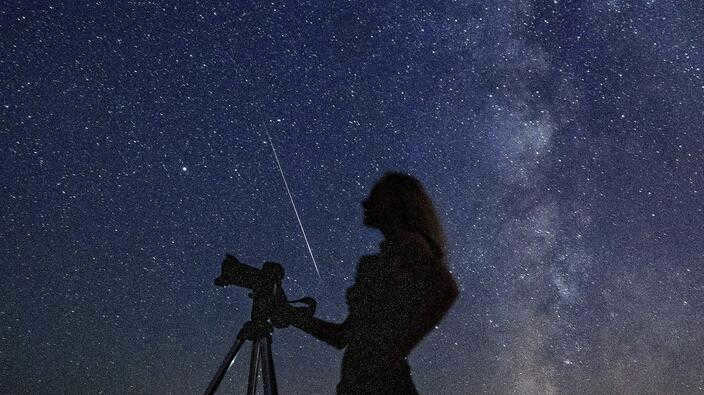
Bring along a blanket or a reclining chair so that you can comfortably enjoy the meteor shower while lying down. This way, you won’t strain your neck and you’ll have a better view. When observing the shower, it’s best to look in the opposite direction of the radiant point. For instance, the radiant point of the Perseid meteor shower is located in the constellation Perseus, which can be easily spotted in the sky to the right of the Big Dipper and below the constellation Cassiopeia, which resembles the letter W in the sky.
How to Make a Wish
When adhering to the ancient tradition of making a wish upon a shooting star, it is vital to adhere to certain guidelines – at least according to astrologers (although it is possible that some astronomers concur with them). While witnessing a meteor shower, you should envision yourself ridding your life of anything that hinders your happiness. This could be a negative habit, a toxic individual, or a sickness.
The second crucial guideline is to make a wish exclusively for yourself – you must exhibit a healthy sense of self-interest and contemplate what will enhance your life. Additionally, do not despair if you fail to catch a glimpse of a single luminous meteor while stargazing. It is believed that the event itself and its energy hold greater significance than simply observing it.
One aspect that astrologers emphasize is the lack of fear in dreams. It is important to eliminate any negativity from the desire and envision it as if the goal has already been accomplished.
We have all made wishes upon shooting stars at some point. But have you ever pondered where they land? What would become of the constellations if a star were to fall? And what causes stars to fall if space is weightless?
What are stars?
First and foremost, it is important to define the concept of stars. In basic terms, stars are enormous luminous spheres composed of gas. The Sun, which is the nearest star to us, serves as a prime example. Other celestial bodies of this nature are located at considerable distances from our planet, which is why they appear as small white dots in the sky rather than as massive luminaries.
Let’s begin with the most crucial point, which is that falling stars are not actually stars. The objects that fall from the sky are meteoroids, which are remnants of comets and asteroids, burning up in the atmosphere. The process of a meteoroid burning up is called a meteor. Meteoroids that survive the journey through the atmosphere and land on the Earth’s surface are known as meteorites. The trail of a meteor usually disappears within seconds, although occasionally it can linger for minutes and be influenced by the wind.
As mentioned previously, meteoroids are primarily composed of debris from comets. Comets orbit the Sun and leave behind a trail of debris along their path. These fragments come together to form meteor streams. When the Earth intersects with one of these streams, we witness what is commonly referred to as a “shooting star.”
The point where the Earth’s orbit intersects with the orbit of a comet.
When star showers are visible
The occurrence of individual meteoroids falling is a fairly common event that is nearly impossible to predict. However, we can anticipate when the Earth will cross paths with a significant meteor stream, especially since this event occurs annually. Below, we present a schedule of the most prominent star showers.
We highly recommend paying close attention to the Perseids and Geminids. The crossing of these meteor streams can result in several hundred “falling stars” per hour, and the brightness of these particular “falling stars” is unmatched by any other star showers.
The phenomenon of a shooting star in the night sky has long captivated the human imagination, evoking a sense of wonder and awe. Throughout history, these celestial events have been intertwined with various legends and believed to possess mystical powers. Even in modern times, witnessing a shooting star prompts people to make a wish, confident that it will be granted. However, with our increased knowledge of the cosmos, we can now provide a scientific explanation for this captivating phenomenon.
To understand the phenomenon of falling stars, it is important to first familiarize ourselves with the concept of “stars”. When viewed from Earth, stars appear as small, luminous dots that are scattered across the night sky in intricate patterns.
However, it is important to note that stars are constantly emitting light. These celestial bodies are actually massive balls of gas undergoing continuous nuclear chemical reactions, primarily involving helium, hydrogen, and other elements. It is the result of these reactions that creates the radiant glow of stars. Due to their great distance from Earth, they appear to us as mere dots of light.
The Sun is the most well-known and easily observed star in our vicinity. It is situated closest to our planet, allowing us to not only witness its radiant light but also experience its warmth. With a surface temperature of 5,700 K and an internal temperature of approximately 15,700,000 K, the Sun is a fiery force to be reckoned with. While stars, like all celestial objects, are not motionless, their movements are much more gradual and fluid compared to planets and comets. The apparent motion of stars across the sky is merely a result of Earth’s own motion, and their true movement can only be discerned over millions of years.
What is the reason for the phenomenon of falling stars?
Stars do not actually fall due to their high internal pressure and gravitational forces that help them maintain their balance. The term “falling stars” is simply an expression that originated from a time when all objects in the night sky were believed to be stars.
However, our planet is constantly bombarded by space objects known as meteoroids. These meteoroids are composed of dust, rocks, and metals, which are remnants of comets and asteroids. When they enter the Earth’s atmosphere at high speeds (over 13 km/s), they ignite and create streaks of light in the sky, which we perceive as shooting stars. Most meteoroids burn up completely in the atmosphere, but larger ones are called bolides and may still manage to reach the Earth’s surface, becoming meteorites.
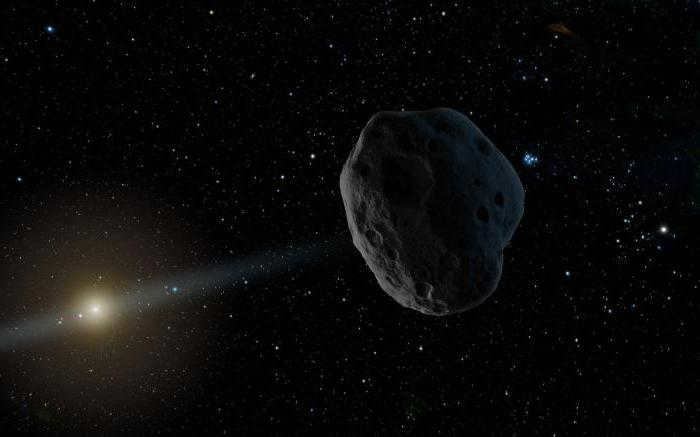
Occasionally, the sky is graced not by a solitary meteor, but by an entire cascade of meteors known as a “star rain”. These showers are created when a comet, venturing too close to the Sun, sheds its particles. These remnants continue to orbit and occasionally intersect with the Earth, resulting in a breathtaking display of shooting stars.
Each “star rain” is associated with a specific time and region of the sky, typically named after the constellation in which it is observed. Examples include the Perseids, Aquariids, Orionids, Leonids, Lyrids, Draconids, and many more. Currently, there are approximately 64 known meteor streams.
What is the reason for the occurrence of starfall in late summer? In August, the Perseids create a regular meteor shower. The meteor stream becomes visible near the Perseus constellation as early as July 17, but the best time to see it is on the night of August 12-13. These meteors are a result of the Swift-Tuttle comet, which was first discovered in 1862.
The comet passes by the Earth only once every 135 years, but every year our planet encounters a cloud of dust from its tail. The Perseids are known to be one of the most active meteor streams. It is possible to see up to 100 meteors in a single hour of observation.
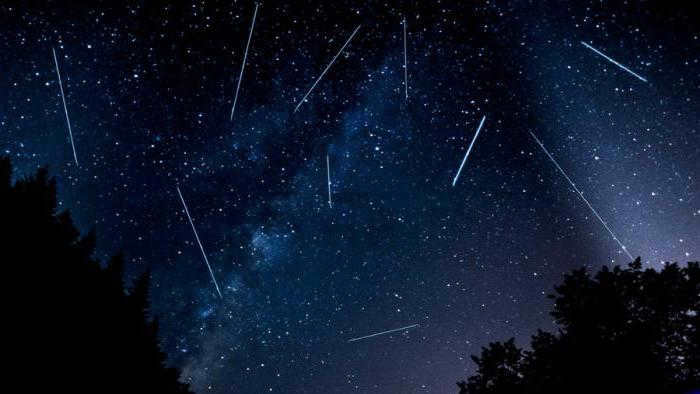
Orionids
The Orionids are another well-known meteor shower. They are created by the debris left behind by Halley’s comet, which will next be visible in 2061. The Orionids can be observed twice a year – in early May and during the last week of October. During the autumn, they pass through the constellation of Orion, with their peak activity occurring on October 21st. In the spring, they emerge from the direction of Aquarius and are called Aquarids.
Draconids Meteor Shower
The Draconids meteor shower is known for its variability. The number of meteors observed during this event can change significantly from year to year. For example, in 1933, stargazers were able to witness up to a thousand meteors per hour, while in 2011, the number did not exceed 300, which is still a considerable amount.
The Draconids meteor shower is visible from October 6 to 10, with its peak activity occurring on October 8. This celestial phenomenon can be seen in the Northern Hemisphere and is best observed before dawn. It is worth noting that the Draconids are associated with the comet Giacobini-Zinner, which orbits the Sun every 6.6 years. In September 2018, the comet will pass relatively close to Earth, potentially enhancing the viewing experience of the Draconids meteor shower.
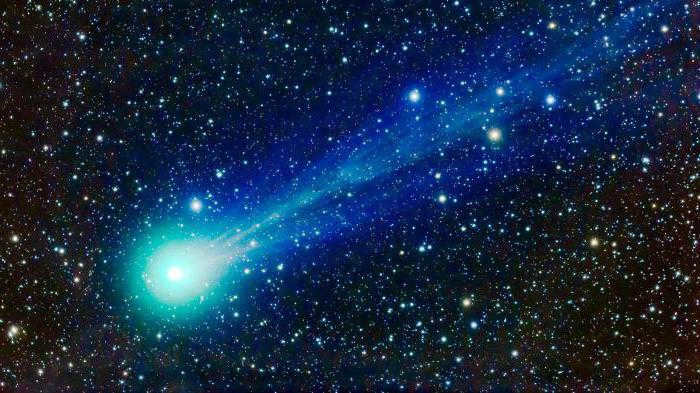
The Role of Shooting Stars in Mythology
When shooting stars streak across the sky, they are now understood as nothing more than ordinary space debris that burns up upon entering the Earth’s atmosphere. However, in ancient times, they were believed to have a much more profound significance. These celestial phenomena were thought to be the fading souls of departed individuals or the souls of beings that were descending to Earth in order to be reborn as infants.
The ancient Slavic people regarded meteors as malevolent spirits. They referred to them as flyuns, letavitsy, perelestniki, and ognianniki. These spirits would manifest themselves as dragons, handsome young men, or beautiful young women. Upon plummeting to the ground, they would appear before solitary individuals who yearned for their beloveds, draining them of their life force in the process.
Later, meteors acquired positive attributes and became symbols of hope and good tidings. Even today, there is a belief that if you make a wish while a shooting star is falling, it will surely come true.
How enchanting are the balmy nights towards the end of summer. The air is filled with the scents of herbs and the sun-warmed earth. Every now and then, the bright tails of shooting stars ignite in the dark expanse of the sky.
Occasionally, nature puts on this “stellar spectacle” specifically for romantics who believe that their deepest desires are granted when stars descend to the ground.
Fortunately, when observing the stars, they do not actually fall. To be more precise, they have the potential to fall, but the appearance would be quite different. Regardless, what we occasionally witness in the summer sky has no connection to these astronomical entities.
A star is an enormous mass of blazing hot gas. It has a tremendous size. The nearest star to us, the Sun, is considered a medium-sized celestial body. However, it could contain multiple Earth-sized volumes. We can’t even fathom the consequences if objects of that magnitude were to collide with our planet on occasion.
According to scientists, it is possible for a star to “fall” into a black hole or even onto a planet. However, the phenomenon commonly referred to as a shooting star has a completely different astronomical explanation. Therefore, it is incorrect to label this occurrence as a shooting star. This term was coined in ancient times when humans had limited knowledge about the cosmos.
What causes a shooting star?
Within the vast expanse of space, the ever-changing nature of celestial bodies is a constant spectacle. Stars are born and die, planets emerge and vanish, and comets soar and disintegrate. Amidst this cosmic dance, remnants of these celestial phenomena hurtle through the Universe at incredible speeds, occasionally finding their way to the surfaces of other celestial bodies.
This accumulation of celestial debris comprises both inconspicuous particles known as space dust and larger objects called meteoroids. When these objects enter Earth’s atmosphere, the friction they encounter causes them to heat up to such an extent that they ignite and emit a luminous glow. This dazzling display in the sky is often mistaken for the tail of a shooting star.
What is a star shower?
A star shower occurs when large comets break apart, creating a cluster of various-sized particles known as a meteoric body swarm. Due to gravitational force, these particles continue to disperse throughout the cosmos, resembling a plume.
If our planet happens to intersect with the trajectory of one of these plumes during its movement, we can witness a meteor shower in the sky, commonly referred to as a star shower or star rain.
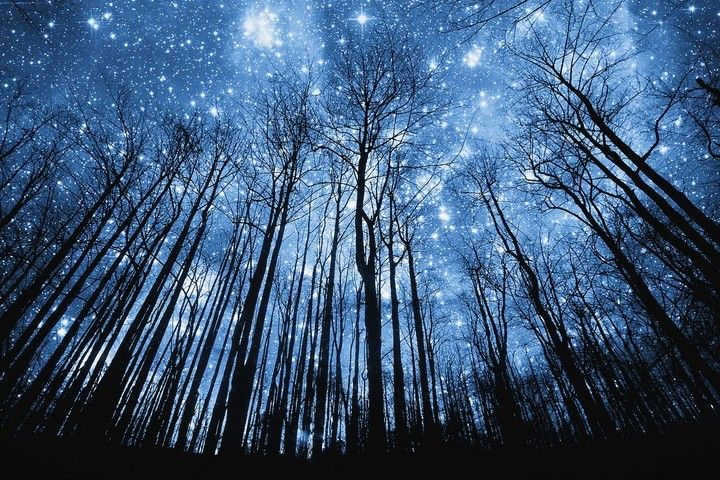
What distinguishes meteors from meteorites?
Meteoroids are typically fragments of asteroids and other large celestial bodies. In most cases, they disintegrate upon entering the Earth’s atmosphere, resulting in a phenomenon known as “meteors”. Meteoroids that survive the atmospheric entry and land on the Earth’s surface are referred to as “meteorites”.
Meteorites come in various sizes, with the largest one discovered by scientists weighing approximately 60 tons. The earliest recorded instance of a meteorite falling from the sky dates back to ancient Rome in 467 B.C., as documented by historians from that era.
When is the ideal time of year to indulge in stargazing?
Throughout the year, the Earth encounters various meteor showers on a regular basis. Each shower is named after the constellation in which its “point of origin” (known as the radiant) is located. From our perspective on Earth, it appears as though the meteors are all coming from one central point, but this is actually just an optical illusion. In reality, the particles are traveling in parallel paths. This illusion is due to the vast distances involved.
Some of the well-known meteor showers include the Aquarids, Leonids, and Perseids. Among these, the Perseid meteor shower is particularly impressive and captivating. It can be observed every summer in the northern latitudes of the Eurasian continent. The Earth passes through this meteor stream for an entire month, during which tens of thousands of meteors can be seen per hour. The peak of the Perseid meteor shower, however, occurs between August 12th and 14th.
The Perseids are associated with the comet Swift-Tuttle. The comet itself comes close to Earth only once every 150 years or so, but every year our planet encounters its trail of dust particles.
Along with the Perseids, there are several other meteor showers that occur annually. These showers take place at different times throughout the year, but not all of them result in a display of shooting stars. Some of the most impressive meteor showers include the Taurids and Orionids, which can be seen from October to early November, and the Leonids and Geminids, which occur in November and December, respectively.
It is highly recommended for young men who are in love to thoroughly examine the timetable of celestial events and the prediction of their magnitude. This fresh information can be effectively utilized to arrange the most breathtaking rendezvous. Nothing can be more enchanting than presenting a lady with a shooting star and granting her the chance to make a heartfelt wish.
Starfalls are a common phenomenon that captivates our attention when we catch a glimpse of a bright object streaking across the night sky, leaving behind a trail of light. But what exactly are these starfalls and why do they occur?
Contrary to popular belief, the objects we witness are not actually stars falling from the sky. Even the nearest star system to us, Alpha Centauri, moves so slowly across the celestial sphere that it is practically imperceptible to the naked eye (less than 1/60th of a degree). Therefore, the starfalls we occasionally observe are nothing more than small celestial bodies passing in close proximity to the Earth.
Shooting Stars
The primary candidate for the role of a “shooting star” is a meteor. A meteor is a phenomenon that occurs when small meteoric bodies, such as fragments of asteroids or comets, burn up in the Earth’s atmosphere. This burning is caused by the friction between the fast-moving body and the surrounding atmosphere, which consists of nitrogen, oxygen, and other gases. These bodies can either fall directly to Earth or come close enough to enter the atmosphere. In the latter case, the body can escape the atmosphere and continue on its path, losing some of its mass through burning. If the body does not completely burn up and reaches the Earth’s surface, it is called a meteorite. In both cases, we witness the burning of the body in the atmosphere, commonly known as a “shooting star.”
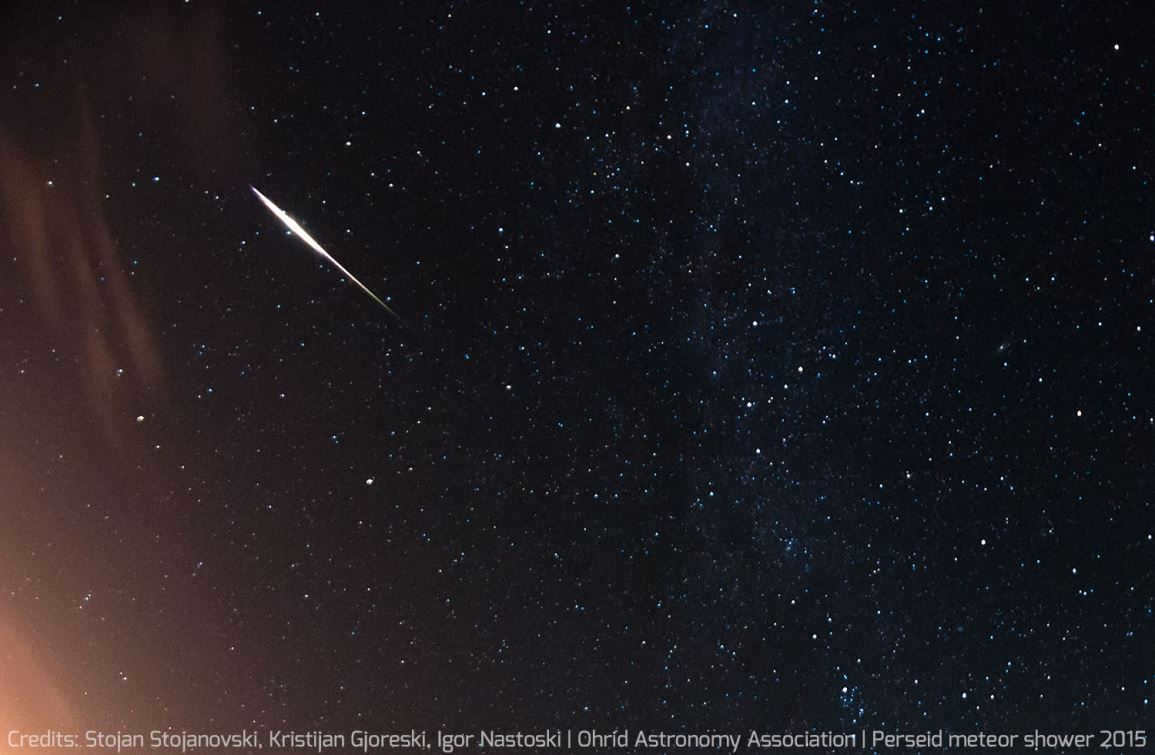
Meteor showers
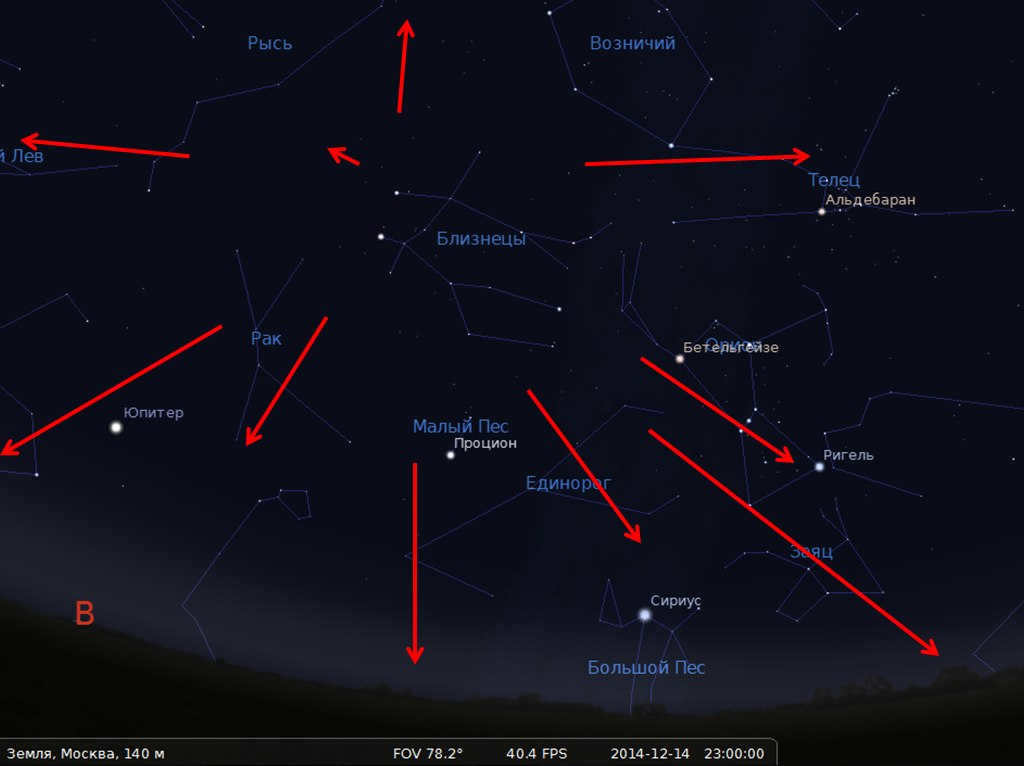
A radiant is a point in the sky from which meteors appear to originate.
A meteor shower is typically named after the constellation or star that it appears to radiate from. Currently, astronomers have verified the existence of over 60 meteor streams, with another 300 streams still awaiting confirmation.
Although the meteor shower is a recurring event that can theoretically be anticipated, it is not a regular occurrence. The main distinction between a meteor shower and a meteor storm is that the former is not only caused by celestial bodies passing through the Earth’s atmosphere, but also by bodies impacting the Earth’s surface. Therefore, it is impossible to observe the same meteor shower caused by the same group of bodies more than once, as all of the bodies either disintegrate in the atmosphere or make contact with the Earth’s surface.
Comets
It is important to mention that the phenomenon of a “shooting star” can occur not only due to the friction of a celestial object with the Earth’s atmosphere. We are aware that asteroids are solid objects, typically consisting of metals, carbon, or other solid elements like silicon. Conversely, a comet is generally composed of ice with small particles of solid matter.
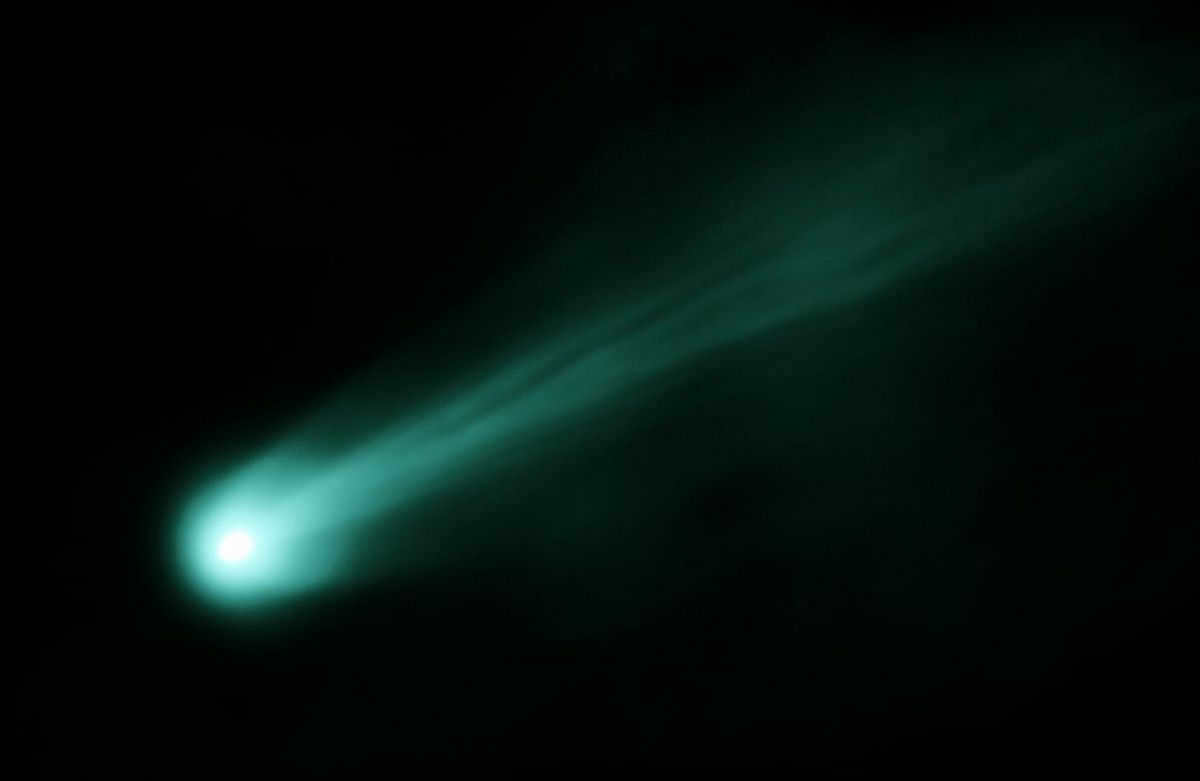
In addition to celestial bodies, meteors can also be caused by various space debris orbiting the Earth.
Compilation of Meteor Streams
| December 7 – December 17 | December 14 | 35 | 120 | Strong | 3200 Phaeton |
| July 12 – August 19 | July 28 | 41 | 20 | Weak | 96P/Machholz 1 |
Occasionally, one can witness stars descending from the heavens. Legend has it that when you spot a shooting star, making a wish guarantees its fulfillment.
However, what we consider to be shooting stars are actually small rocks hurtling through space. As these rocks get closer to our planet, they collide with the Earth’s atmosphere and become incredibly hot, causing them to glow like stars. These fiery rocks, known as meteors, burn up and extinguish before they can reach the Earth’s surface. If a piece of a meteor does manage to make it to the ground, it is referred to as a meteorite. Particularly bright meteors are called bolides.
Every day, hundreds of millions of meteors enter the Earth’s atmosphere. Their combined mass is estimated to be thousands of tons per day. Additionally, approximately 100 tons of minuscule dust particles also fall to the Earth’s surface each day, although they are too small to produce visible meteors.
During certain times of the year, there is a higher frequency of meteors visible in the sky. This occurrence is known as a meteor shower, where an abundance of meteors can be seen per hour.
If you were to track the paths of these meteors in the sky, you would notice that they all seem to originate from a single point. This point is referred to as the radiant of the meteor shower. This optical illusion is a result of the phenomenon of perspective, similar to how we perceive railroad tracks converging at the horizon. In reality, however, the meteor particles are actually moving along parallel trajectories.

